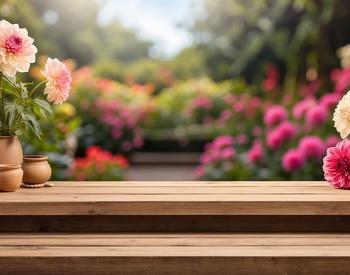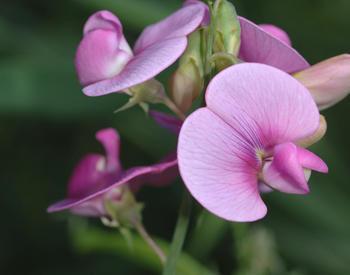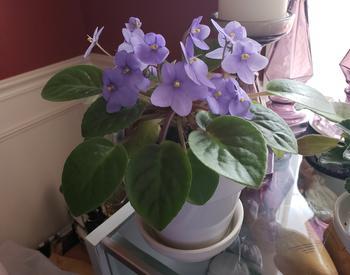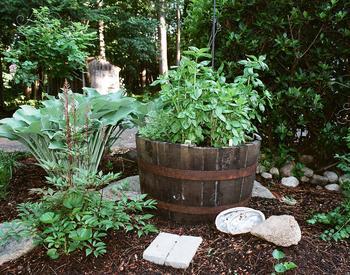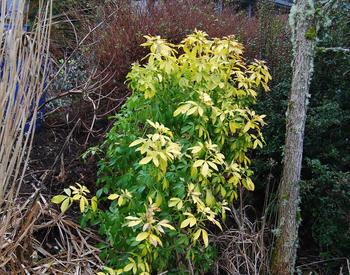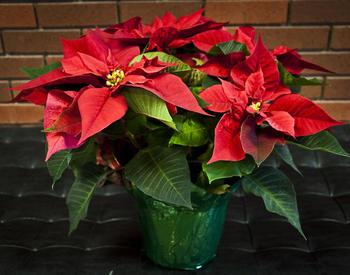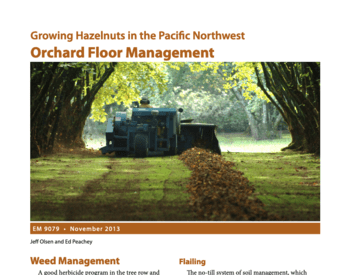Selecting roses for landscape use may seem like an impossible task, but with a few key elements in mind, you can select a rose or a group of roses to complement your new or current landscape.
The performance of different types and cultivars of roses varies from one part of the country to another. Visit local rose gardens to see flowers in bloom and to take note of the plant form.
Categories of roses in the landscape
Ground cover
Ground covers tend to be low-growing and will not exceed 3 feet in height. Ground-cover roses are perfect for smothering a bank or garden bed. These lower-growing roses will droop over rock walls or down the edge of a large bank. Select varieties for your region and plant them close together for faster fill-in if needed. Some ground-cover roses may have intricate stems; most will have foliage that can remain year-round in certain zones. Most ground-cover roses only need minimal pruning.
Planting suggestions
- The Fairy. Pink double blooms about 1 inch in diameter. This spreading plant has bright green foliage; an outstanding rose.
- Baby Blanket. Dainty pink rose that is constantly in bloom. Let it cascade down a bank or hillside. Spreads knee-high in a border.
Shrubs
Shrubs are a group of roses that don't get much attention, yet they offer design options for the landscape that are endless. The name is a bit of a catch-all for a diverse range of roses and is simply a rose that you treat like a flowering shrub. Most shrub roses make very attractive hedges and work well in borders. The best type of shrub rose may be one that is self-cleaning. This means it will drop its blossoms quickly after blooming and will repeat continuously during the growing season.
Rosa rugosa is a group of very hardy shrub roses. These are the workhorses of the garden. Most have crinkled leaves, are disease resistant, have a good bushy growth habit, and have spectacular fall hips.
Planting suggestions
- Seafoam. Great hedge of creamy, white double blooms that are set off by glossy, dark green foliage. Always covered with continuous bloom. Plant in groups for a striking effect.
- Bonica. Soft pink, fully double blooms. Beautiful arching canes with mid-green foliage. Great for mass planting or hedges. Great fall hips.
- Carefree Delight. Blooms produced in clusters of soft, delicate pink. A vigorous, well-branched spreading plant with graceful arching canes. Disease resistant.
- Rosa rugosa: Roseraie de l'Hay. Semi-double, wine-red blooms, great fall foliage, tolerates some shade, repeat bloomer.
- Rosa rugosa: Theresa Bugnet. Huge double pink blooms, very fragrant; repeat blooms several times over the season. Tolerates shade and makes an outstanding display in a bouquet.
Climbers and ramblers
Climber/ramblers are the attention getters in the landscape. Most add height and a color combination that is sure to be an eye-catcher. Climbers, however, need some form of support to do the best job possible in the landscape. It can be a simple pole or fence, but the plant will need some type of training and support to create the desired look.
Climbing roses in the garden are usually instrumental in creating a focal point for garden design. Climbers do need a support of some type, a trellis, arbor, or fence pillars to climb or lean on. It is best to train climbers from early on when the canes are pliable and easy to train into a spreading form. This spreading form creates lateral growth which in turn will produce many blooms on a repeat bloomer.
Ramblers have slender canes with clusters of flowers and bloom only once but in such profusion that they more than make up for their one-shot bloom. Ramblers work best in the landscape design as roses that cover unsightly walls or outbuildings; you may even try to send this rose up and into a tree.
Planting Suggestions
- Climber: Cecile Brunner. Shell pink, slightly fragrant, single bloomer.
- Climber: New Dawn. Semi-double flowers in pink. Blooms continuously. tolerates some shade and some say it is disease-free and a vigorous grower.
- Climber: Blaze. Very popular red rose. Foliage is dark and pretty.
- Climber: Golden Showers. The best yellow rose that fades to a soft yellow. Blooms all summer; beautiful, glossy foliage. Grows well on a pillar.
- Climber: Sombreuil. Creamy white quartered blooms. Repeats; great fragrance and besides, it is just beautiful.
- Climber: Dortmund. Red with a white eye, and it has a ruffled edge to the bloom. Repeat bloomer.
- Rambler: American Pillar. Beautiful bright pink blooms with a white eye.
- Rambler: Dorothy Perkins. Soft pink fluffy blooms. This one really sends the runners over the ground and up into structures. I have one growing into a tree.
- Rambler: Vielchenblau. Purple blooms with white eyes. A white clematis companion plant is perfect here. This rose has few or no thorns. Tolerates some shade.
Planting Your Roses
Where to Plant
Roses do well in a wide variety of soils with a pH of 6.5-7.0. They love full sun but also do well where they receive five or six hours of sun daily. Some actually produce better quality blooms with only morning sun for five to six hours. A few, especially Albas, Hybrid Musks, and a few others, do well in semi-shaded areas. Roses like good drainage.
Spacing
One of the greatest mistakes in planting roses, especially old garden roses, is underestimating their mature size and planting them too closely together. A rose bush may look small when you get it, but it doesn't stay that way for long. Ramblers and climbers should be spaced six to eight feet apart. Bush roses should be planted as far apart as they are tall when mature.
Planting
The single most important factor in growing beautiful, large rose bushes is digging a big hole. A big hole is at least twenty-four inches wide by twenty-four inches deep. You can mix one-third compost with the soil from the top two-thirds of the hole. Discard the lower, usually infertile soil from the bottom of the hole. You might mix one cup of bone meal into the mixture also.
I am a firm believer in the benefits of manure, but I recommend mixing it 50/50 with the soil that goes into the bottom third of the hole as there is a chance it could be too fresh and might burn the fine feeder roots the rose will soon put out. When manure is at the bottom of the hole, these roots won't reach it for a year, and by that time it will have mellowed and be ready to give your rose a nice boost.
Plant your new rose in the middle of a big hole about one inch deeper than it was in the pot. I caution against planting a new rose in the same soil where a rose, or any other shrub for that matter, has been growing for years. The new rose will not perform well.
Watering
Roses love water. Give them at least one inch, preferably two inches, of water a week throughout the growing season. They will reciprocate with beauty and blooms. Well watered roses are more disease-resistant as water deprivation stresses the plant and makes it more susceptible to disease.
Fertilizing
We recommend Alaska Fish Fertilizer or liquid fertilizers such as Peters every two to four weeks used as per label directions. We do not recommend granular fertilizers until the second season. Carefully fed roses tend to be more disease resistant. Here in Oregon we do not fertilize after mid-August.
Pruning
When your roses have reached eighteen inches, we recommend that you pinch out the top two to three inches of growth to promote branching. Do not pinch ramblers and climbers. Once roses have bloomed, they should not be winter pruned as you would be removing next spring's blooming wood. They should be lightly pruned (removing a few inches to twenty-five percent of the top of the plant) after their spring blooming period is over. Take out all dead wood.
Climbers and ramblers also bloom on year-old wood. Again no winter pruning except to remove an occasional complete cane that is in the way or getting old (three to four years or more). You may also remove cross branches that are in the way. Ramblers have a tendency to put up many canes. You may want to limit them to just four to eight and keep the rest cut off at the base throughout the year.
Repeat blooming roses (English rose, shrub, hybrid musk, China, etc.) may be treated as large shrubs with little or no pruning except to cut the tips back a few inches, or if you wish, they may be shaped to your satisfaction and kept more compact by removing one- to two-thirds of the tops with winter pruning.
